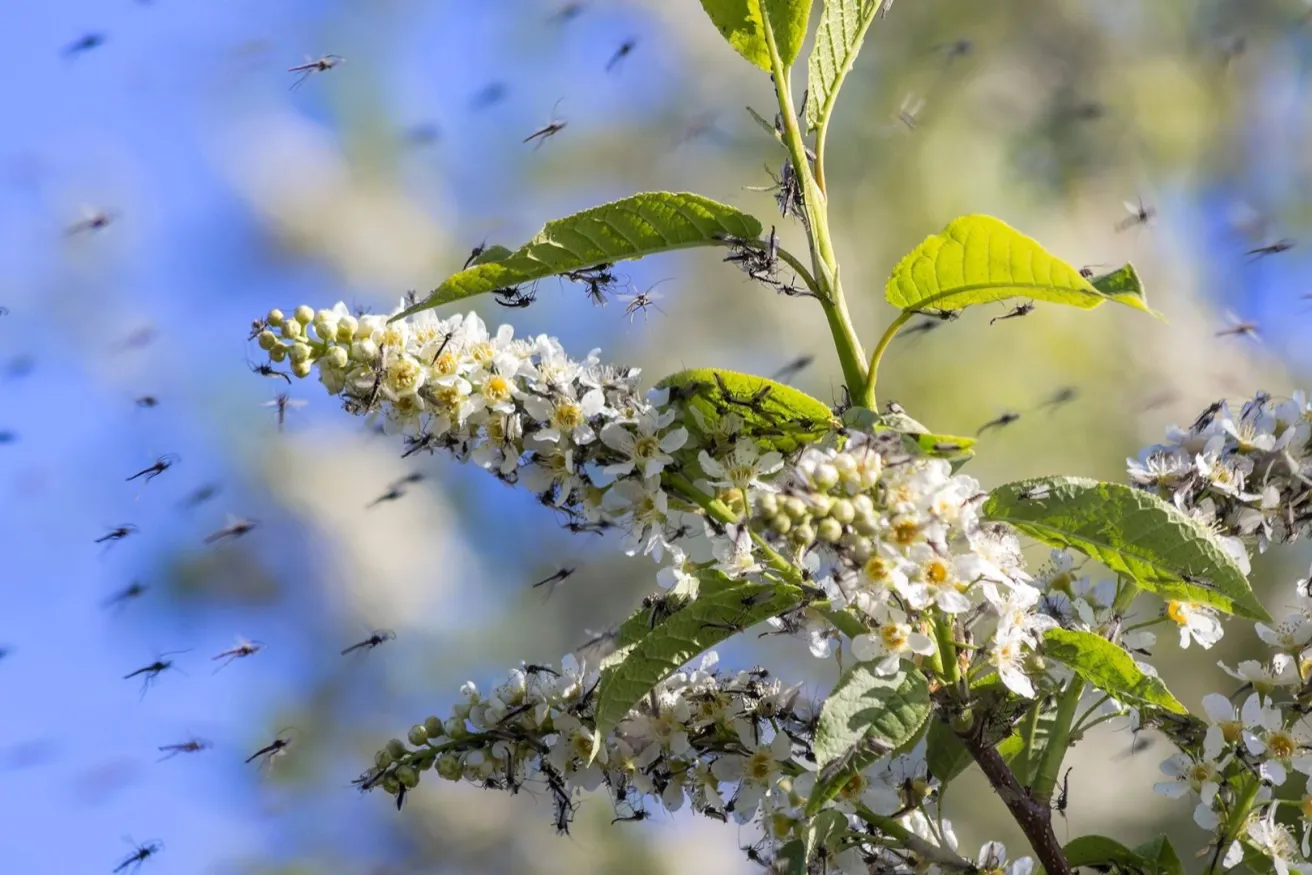Give before midnight on July 31 to double your impact where trees need us most. CHOOSE A PROJECT
Guest post by the USA National Phenology Network
Insects play incredibly important roles in our ecosystems. Various insects pollinate many of the plants upon which we rely for fruits and vegetables, help to decompose dead plants and animals, and are a vital food source for many animals.
There are also a few insects that are truly troublesome, causing major problems that can lead to diminished tree health and sometimes widespread tree death. For example, the emerald ash borer, a beetle that was introduced into the United States from Asia nearly 20 years ago, has destroyed tens of millions of ash trees and is actively spreading across the U.S.[1]
For some of these pests, management action is far more effective when it is undertaken at a specific stage in the insect’s life cycle. For example, apple maggots are best controlled in the span of time occurring after adults emerge from the soil and before they begin to lay eggs in apples. Advance warning of when the life stage of interest will occur in an insect pest can dramatically improve the timing and efficacy of management actions.
The USA National Phenology Network’s Pheno Forecast maps indicate, for a specified day, the status of life cycle stage for several troublesome insect pests in real time across the contiguous United States. These maps are updated daily and are available 6 days in the future.
Pheno Forecast maps are offered for the following species through the USA-NPN visualization tool and the USA-NPN website:
- apple maggot (Rhagoletis pomonella)
- Asian longhorned beetle (Anoplophora glabripennis)
- bagworm (Thyridopteryx ephameraeformis)
- bronze birch borer (Agrilus anxius)
- eastern tent caterpillar (Malacosoma americanum)
- emerald ash borer (Agrilus planipennis)
- gypsy moth (Lymantria dispar)
- hemlock woolly adelgid (Adelges tsugae)
- lilac borer (Podosesia syringae)
- magnolia scale (Neolecanium cornuparvum)
- pine needle scale (Chionaspis pinifoliae)
- winter moth (Operophtera brumata)
Pheno Forecast map for emerald ash borer for April 1, 2018. Colors indicate the status of adult emergence. The status of a location is determined by comparing the local GDD accumulation to a published heat accumulation threshold for the life cycle stage.
Receive Advance Warning by Email.
You can receive advance warning of actionable activity in your pest of interestby email approximately 2 weeks, and again 6 days, before the predicted life cycle stage is reached at your location. Sign up to receive notifications for any of the pest maps at usanpn.org/data/forecasts.
Report Pest Activity at your Site Over the Season.
The USA-NPN maintains Nature’s Notebook, a program for tracking plant and animal activity over the course of the season. Tracking phenology at your site can help you choose the best time to perform management activities and serve as an early warning indicator of trouble brewing among your trees. Tracking phenology of your trees and insect pests can also offer education and engagement opportunities and support research. You can report the status of the Pheno Forecast pest species through Nature’s Notebook through the USA-NPN’s Pest Patrol campaign. We will use these observations to validate and improve our Pheno Forecast maps.
The USA-NPN maintains Nature’s Notebook, a program for tracking plant and animal activity over the course of the season. Tracking phenology at your site can help you choose the best time to perform management activities and serve as an early warning indicator of trouble brewing among your trees. Tracking phenology of your trees and insect pests can also offer education and engagement opportunities and support research. You can report the status of the Pheno Forecast pest species through Nature’s Notebook through the USA-NPN’s Pest Patrol campaign. We will use these observations to validate and improve our Pheno Forecast maps.
Additionally, you can also track the phenology of over 1,300 other species of plants and animals through the Nature’s Notebook. Learn more at naturesnotebook.org.
Who is the USA National Phenology Network?
Funded primarily by the U.S. Geological Survey, the USA National Phenology Network is a national-scale consortium of individuals and organizations that collects, stores, and shares phenological data, value-added data products, and information to advance science and to support natural resource decision-making across a variety of spatial and temporal scales. The Network delivers free and readily available phenological data, connects researchers studying how species respond to climate change with managers who need this information to inform adaptive management, and creates a diverse community of stakeholders. The USA-NPN also hosts Nature’s Notebook, a plant and animal phenology observation program suitable for natural resource managers as well as nature enthusiasts of nearly all ages and skill levels.
About the author
Theresa Crimmins is the Associate Director for the USA National Phenology (www.usanpn.org). Theresa works enthusiastically to grow appreciation of phenology among scientists and non-scientists alike.
[1] https://www.arborday.org/trees/health/pests/emerald-ash-borer.cfm






